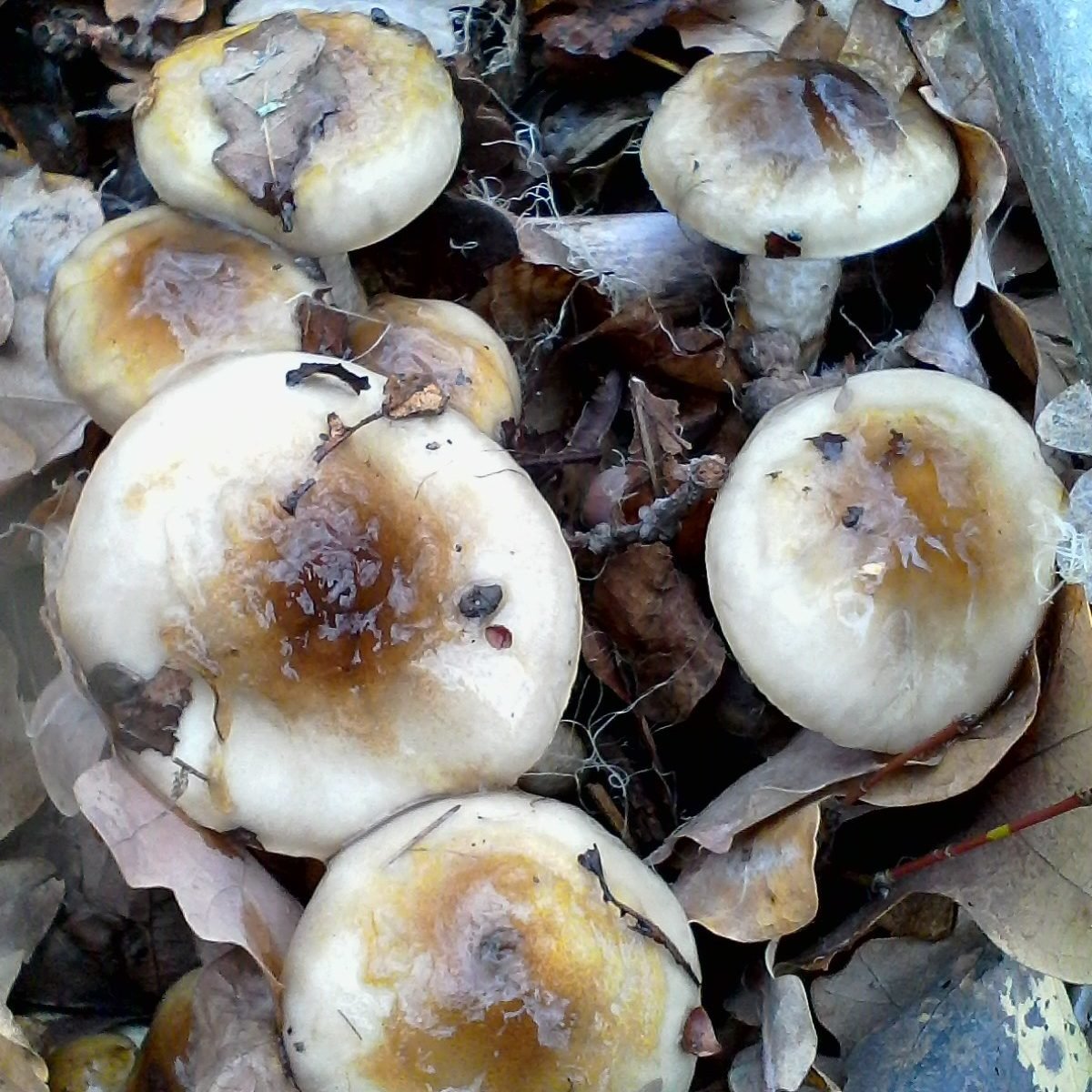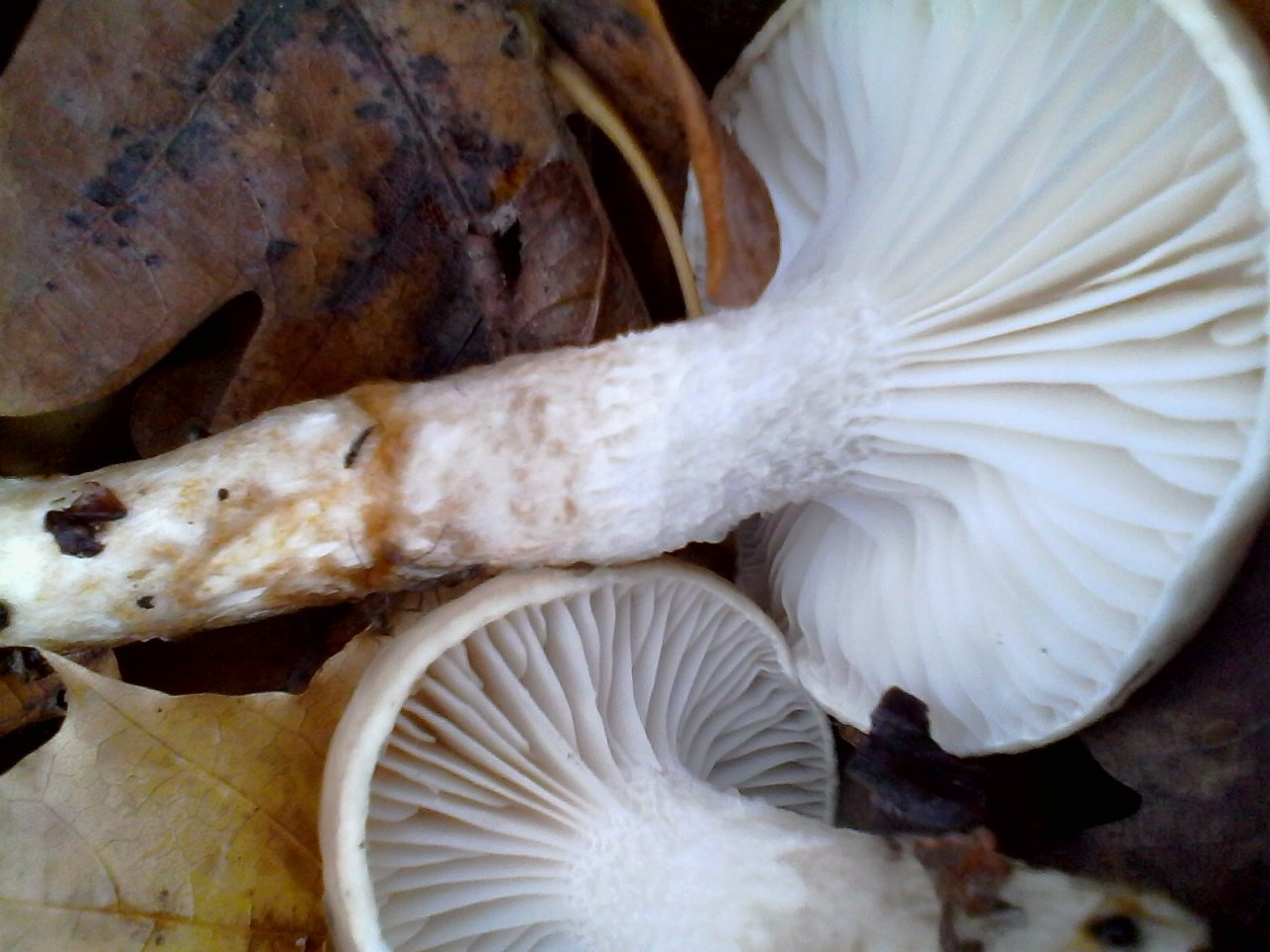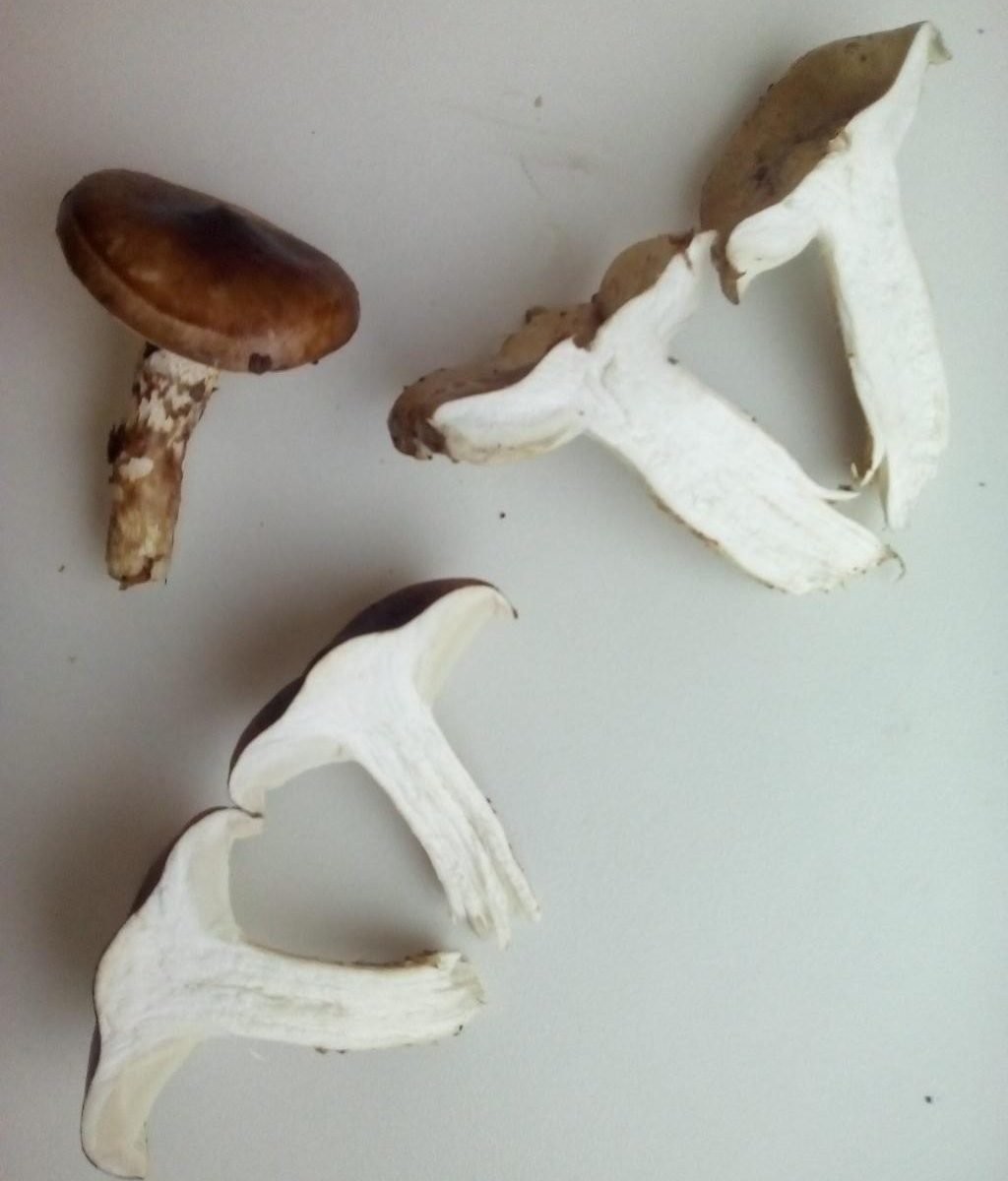Hygrophorus persoonii (Hygrophorus persoonii)
- Nkeji: Basidiomycota (Basidiomycetes)
- Nkebi: Agaricomycotina (Agaricomycetes)
- Klas: Agaricomycetes (Agaricomycetes)
- Klas: Agaricomycetidae (Agaricomycetes)
- Order: Agaricles (Agaric ma ọ bụ Lamellar)
- Ezinụlọ: Hygrophoraceae (Hygrophoraceae)
- Ụdị: Hygrophorus
- ụdị: Hygrophorus persoonii (Hygrophorus Persona)
:
- Agaricus limacinus
- Hygrophorus dichrous
- Hygrophorus dichrous var. dark brown

isi: 3-7(8), rarely up to 10 cm in diameter, at first obtuse-conical or hemispherical with a tucked edge, later becomes prostrate, almost flat in the center with a low blunt tubercle. Not hygrophanous, the surface is very slimy. Initially dark, brown, gray, olive or yellowish-brown with a dark center, later brightens, especially along the edges, to gray or olive-brown, sometimes to light ocher, but with an olive tint, but remains dark in the center .
Records: from widely adherent to slightly decurrent, thick, sparse, first white, then light yellow-green.
Ụkwụ: Height from 4 to 10 (12) cm, diameter 0,6-1,5 (1,7) cm, cylindrical, slightly narrowed at the base.

The upper part of the stem is at first thin, white, dry, then gray-green, granular, below it is colored like a hat – from ocher to light brown, very slimy. As they grow, belts appear: from olive to grayish-brown in color. The stem becomes slightly fibrous with age.
Pulp: The pulp is thick and dense, white, slightly greenish closer to the top of the cap.
Odor: Weak, indefinite, may be slightly fruity.
Taste: sweetish.

spore ntụ ntụ: white, spores 9-12 (13,5) × 6,5-7,5 (8) µm ovoid, smooth.
Chemical Jeremaya: the following reaction occurs with a solution of ammonia or KOH: the surface of the cap becomes blue-green.
It grows in broad-leaved forests, forms mycorrhiza with oak, and is also found in beech and hornbeam forests. Grows in small groups. Season: August-November.
The species is rare, found in Europe, Asia, the North Caucasus, in Our Country – in the Penza, Sverdlovsk regions, the Far East and Primorsky Krai, the distribution area is most likely much wider, there is no exact data.
A na-eri ero.
Hygrophorus olivaceoalbus (Hygrophor olive white) – found in mixed forests, more often with spruce and pine, has a smaller size
Hygrophorus korhonenii (Korhonen’s Hygrophorus) – a hat less slimy, striped, grows in spruce forests.
Hygrophorus latitabundus grows in warm pine forests in the lowlands and low parts of the mountains.
Photos used in the article: Alexey, Ivan, Dani, Evgeny, as well as photos of other users from questions in recognition.









